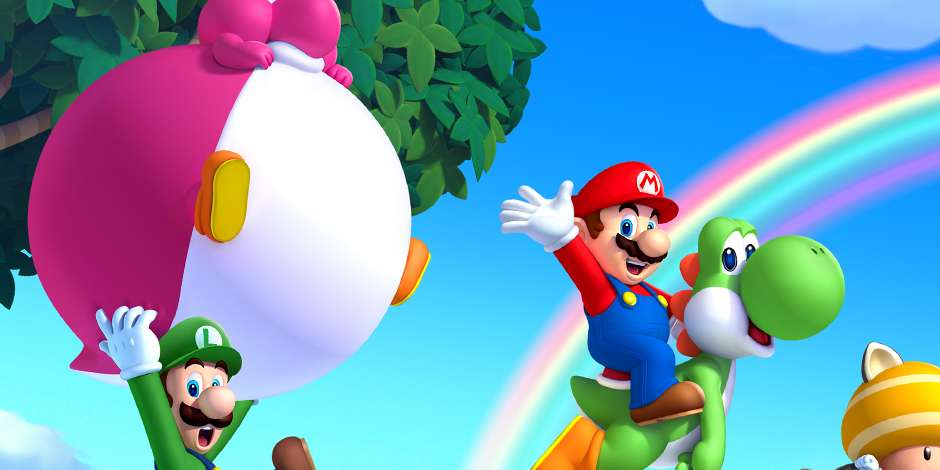GamesRadar+ Verdict
Pros
- +
Classic Mario fun with refreshing additions
- +
Tons of minigames to test your skill
- +
Very good looking when it wants to be
Cons
- -
HD graphics arent as impressive as they could be
- -
Having your friends jump on you in multiplayer
- -
Still not as innovative as the 3D Mario games
Why you can trust GamesRadar+
The 2D New Super Mario Bros. games have always been crowd-pleasing throwbacks to Mario’s past, but even though every entry in the series has been a huge seller, none made the same lasting impression as Super Mario Bros 3 or Super Mario World. Fortunately, Wii U launch game New Super Mario Bros U represents a welcome return to not just the mascot’s 2D roots, but also his innovative spirit. NSMB U is still fun for the whole family, yet it takes enough risks to keep hardcore players coming back.
As has been the case for the last 30 years, NSMB U’s foundation is built upon the concept of moving a diminutive plumber from left to right across a series of platforms. The controls for Mario, Luigi, and the rest remain unchanged; the teams run and jump with dynamic precision. The gameplay is as easy to grasp now as it was on the NES, and that goes double for the simple story of Mario once again saving Princess Peach from Bowser and his bratty kids.
The over familiarity of the setting and controls had been holding back the series for years now, so it’s fortunate that this Wii U title isn’t as afraid to step out of that comfort zone. Thanks to new power-ups, level layouts, and enemies being used in original ways, this expansive adventure finally lives up to the “New” in the title. 2D Mario titles haven’t felt this fresh since the SNES.
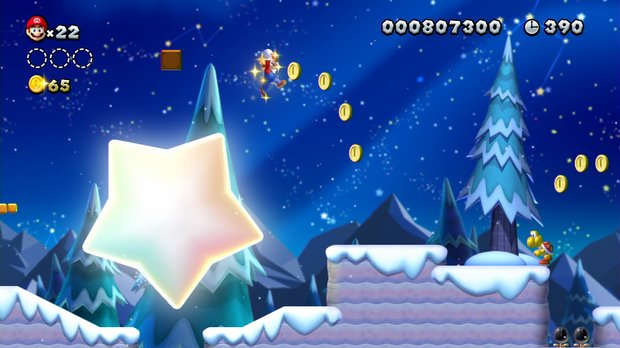
NSMB U’s innovations start small with the new Flying Squirrel suit, but that simple twist on the standard Mario flying controls is merely the beginning. The expansive stages are dense with areas to explore and secrets to find, which is quite different from the constrained stages of New Super Mario Bros 2 or the large but barren backdrops of New Super Mario Bros Wii. Almost all the levels, particularly in the second half of the game, deliver some of the New Mario team’s freshest ideas to date, all implemented in the classic Mario style.
Many of the game’s best moments benefit from a clever, clear level concept that’s supported by interesting uses of enemies new and old. Each stage has the usual cadre of Goombas and Koopas backed up by a handful of original evil minions, in addition to some creative new uses of bosses like Bowser Jr. and the seven Koopalings. All these elements are arranged with care, working in harmony to create memorable platforming action.
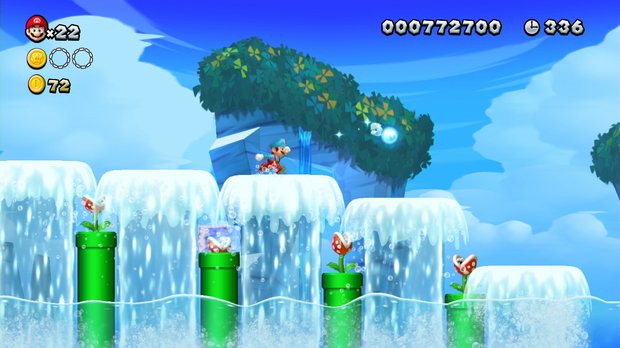
As a solo game, New Super Mario Bros U is a tasty slice of traditional Mario fun, and fortunately it preserves many of its best qualities when played in groups as big as five. The frantic rush of four simultaneous players is a hectic as ever, but it’s at least a little easier to keep clear on an HD screen. Two players is really the ideal number for multiplayer, as that combo inspires teamwork by providing players with enough space to focus on clearing the level at hand.
The third, fourth, or fifth wheel in all these multiplayer scenarios is whoever happens to be holding the GamePad that isn’t directly controlling the character. While watching the action on the touchscreen, that person can tap on the Wii U’s tablet-like GamePad to place helpful (or obstructive) platforms within the stage. Though many serious Mario fans will barely use it, this modest use of the GamePad works great in a party, allowing players that aren’t as confident in their gaming skills to still be a part of the fun.
In general, New Super Mario Bros U’s use Wii U-exclusive features is fairly low key. Motion controls with the GamePad or Wii Remotes often amounts to imprecise shaking to extend jumps, virtually unchanged from how motion was utilized in NSMB Wii. As for the GamePad’s alluring touchscreen, outside of multiplayer it’s mostly used as an optional smaller monitor for what’s on the TV, a convenient extra that’s hardly groundbreaking.
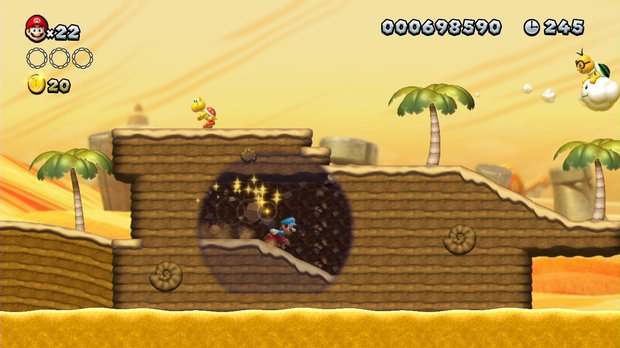
Of all the new system features, NSMB U uses the HD visuals best, though not as consistently as it could. Many stages look good; a few are even downright gorgeous, showing what the Mario devs can accomplish with HD graphics at their disposal. Unfortunately, that limited use of tantalizing graphics makes lesser levels look worse by comparison, with many visually a half-step from the Wii and 3DS franchise entries.
Outside of marveling at the graphics in some select stages and bouncing around with four friends on your HDTV, how much longevity does NSMB U have? A good deal, thanks mostly to the dozens of minigames designed to appeal to the more skilled Mario players out there. Challenges like speed runs and completing a stage without touching any coins push players in ways the New Super Mario Bros franchise has never dared to before, a welcome change of pace.
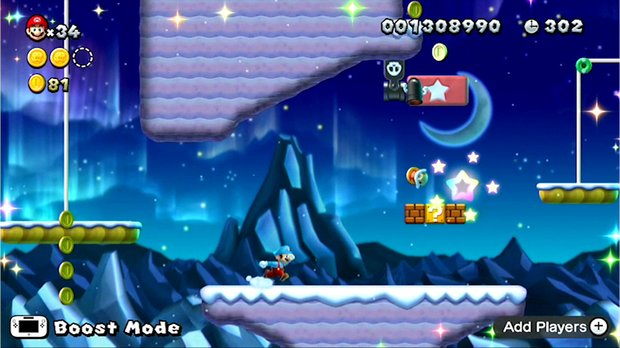
Those minigames make for a nice coda to the best 2D Mario game since the days of the SNES. Though still not as revolutionary as recent 3D Marios, New Super Mario Bros. U is more interested in making new memories than retreading the character’s celebrated history. It’s clear now that the team saved its best for NSMB U, and early Wii U owners should not pass that up.
More info
| Genre | Action |
| Description | The first new Mario game to launch a Nintendo system since 1996, Mario U has a lot of weight on its shoulders. Can it succeed? |
| Franchise name | Super Mario Bros. |
| Platform | "Wii U" |
| US censor rating | "Everyone" |
| UK censor rating | "" |
| Release date | 1 January 1970 (US), 1 January 1970 (UK) |
Henry Gilbert is a former GamesRadar+ Editor, having spent seven years at the site helping to navigate our readers through the PS3 and Xbox 360 generation. Henry is now following another passion of his besides video games, working as the producer and podcast cohost of the popular Talking Simpsons and What a Cartoon podcasts.
